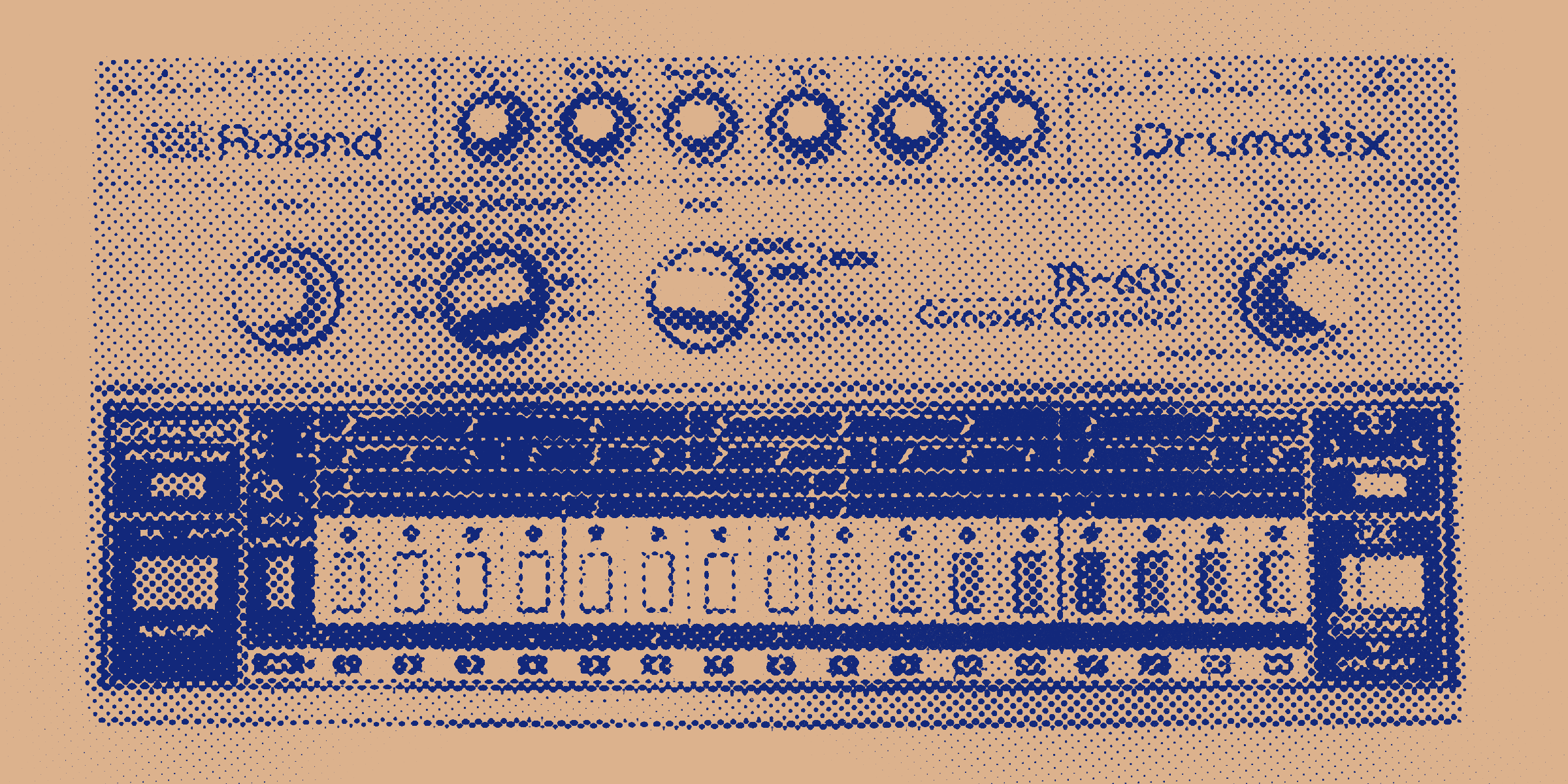Don't forget about the Roland TR-606
Often considered the forgotten cousin of the larger Roland drum machines, there's some good reasons to not forget about the Roland TR-606.

The Roland TR-606 Drumatix, a compact drum machine that emerged from the shadows of the early 1980s, became one of the surprise hits of the decades that followed. Its distinctive sound, coupled with its affordability and portability, has made it a staple in the arsenal of countless musicians, shaping the soundscape of various genres from techno to hip-hop.
What is the Roland TR-606?
The Roland TR-606 Drumatix is a programmable analog drum machine, a piece of electronic musical equipment that creates percussion sounds in a pre-programmed or real-time sequence. Manufactured by the renowned Japanese company Roland Corporation, the TR-606 was introduced to the world in 1981. It was initially designed to be a companion to the TB-303 Bass Line, a monophonic bass synthesizer, and was part of Roland's family of "TR" (Transistor Rhythm) machines, which also included the famous TR-808 and TR-909.
The TR-606 is compact and lightweight, making it a portable solution for musicians on the go. It can be powered by batteries, and its built-in speaker allows for impromptu jam sessions or performances virtually anywhere. The machine's silver casing and simple, user-friendly interface make it instantly recognizable.
The TR-606 offers seven distinctive analog drum sounds: bass drum, snare, low tom, high tom, cymbal, open hi-hat, and closed hi-hat. Each of these sounds can be tweaked and manipulated using the machine's knobs and buttons, allowing musicians to create a wide range of rhythms and beats. The machine also features a basic sequencer, which allows users to program and store their own drum patterns.
One of the key features of the TR-606 is its ability to sync with other devices via a DIN sync connection. This made it a perfect companion for the TB-303, as musicians could easily synchronize the rhythm of the TR-606 with the bassline of the TB-303. This feature, along with its distinctive sound, made the TR-606 a popular choice for electronic musicians, particularly those in the burgeoning house and techno scenes of the 1980s.
Despite its initial reputation as a budget option, the TR-606 has become a beloved piece of music history, cherished for its unique sound, simplicity, and portability. Today, it remains a sought-after piece of equipment for both vintage gear enthusiasts and modern musicians looking to capture the classic analog drum machine sound.
The History of the TR-606
The Roland TR-606 Drumatix was launched in 1981, during a period of rapid innovation in electronic music technology. It was part of Roland's "TR" series, which also included the TR-808 and TR-909, both of which would go on to become iconic instruments in their own right. However, the TR-606 was initially overshadowed by its more sophisticated siblings and was often seen as a budget option.
The TR-606 was designed to be a companion to the TB-303 Bass Line, a monophonic bass synthesizer. Both machines were marketed towards guitarists as a means of providing a simple rhythm and bass accompaniment for solo practice. However, the complex programming and unconventional sounds of these machines meant they didn't find much success in their intended market.
Sales of the TR-606 were initially slow, and it was often bundled with the TB-303 at a discounted price to boost sales. However, as the 1980s progressed, the TR-606 began to find its footing in the burgeoning underground music scenes. The machine's unique, metallic percussion sounds became a defining characteristic of genres like acid house and techno. Its affordability and availability on the second-hand market made it a popular choice for budding musicians and DJs who were pushing the boundaries of electronic music.
In the late 1980s and early 1990s, the TR-606 began to gain recognition as a versatile and unique-sounding drum machine. Its distinctive sound, once seen as a limitation, was now being celebrated for its uniqueness. Musicians began to explore the creative possibilities of the TR-606, using it to create everything from driving techno beats to intricate, syncopated rhythms.
The TR-606 was discontinued in 1984, but its influence continued to grow. As electronic music became more mainstream, the sounds of the TR-606 could be heard in countless tracks across a wide range of genres. Today, the TR-606 is considered a classic piece of music technology, and original units are highly sought after by musicians and collectors alike.
Iconic Albums and the TR-606
The TR-606 has been used on countless albums across a wide range of genres. One of the earliest and most notable examples is Phuture's "Acid Tracks" (1987), which is often credited as the first Acid House track. The album's squelchy, hypnotic rhythms were created using a TB-303 and a TR-606, showcasing the drum machine's potential for creating groundbreaking sounds.
In the realm of rock, bands like Nine Inch Nails and Autechre have also utilized the TR-606 to add a unique electronic element to their music. Trent Reznor of Nine Inch Nails used the TR-606 on the album "Pretty Hate Machine" (1989), blending industrial rock with electronic beats.
The TR-606's Cultural Relevance Today
Despite being over four decades old, the TR-606 remains a relevant and sought-after piece of equipment in today's music culture. Its distinctive sound can still be heard in genres like techno, house, and even pop music. Modern producers often use digital samples or software emulations of the TR-606 (although it was ignored when Propellerhead's first released their iconic ReBirth-338 software emulation of a standard acid house rig), but many still prefer the original hardware for its unique analog warmth and hands-on control.
Furthermore, the TR-606 has transcended its role as a musical instrument and become a symbol of the DIY ethos in electronic music. It represents a time when musicians and producers, armed with affordable hardware, could create new and exciting sounds from their bedrooms, influencing the course of music history. The simple design and lack of flair might see it skipped in some of the nostalgia from the Synthwave community, but the unassuming nature and slightly bland vibe is, oddly enough, what makes it stand out for the subsequent Vaporwave genre.
In conclusion, the Roland TR-606 Drumatix is more than just a drum machine. It's a testament to the power of innovation and creativity, a tool that has shaped the sound of multiple music genres, and a cultural icon that continues to inspire musicians today. Its legacy is a reminder that sometimes, the most influential instruments are not the most expensive or sophisticated, but those that offer the right blend of functionality, accessibility, and distinctive character.


